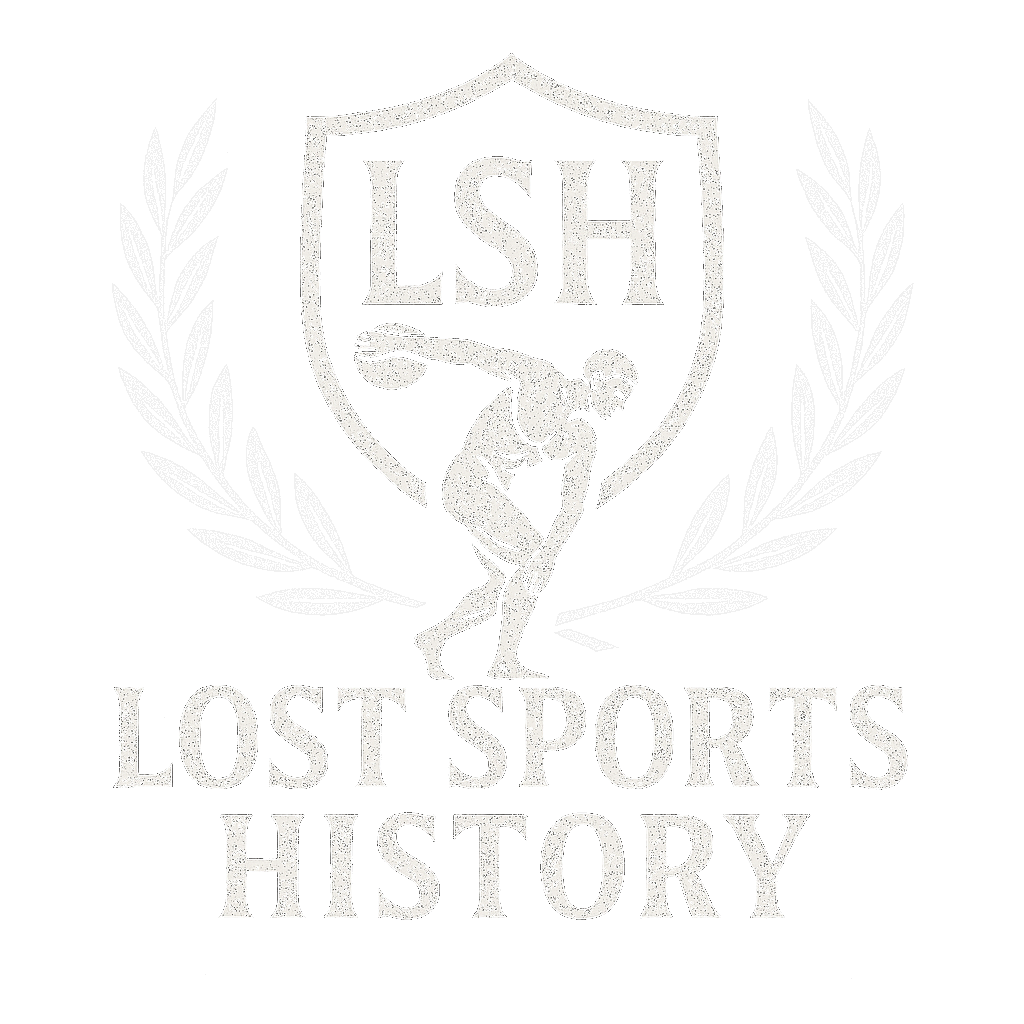Now Reading: Did the Ancient Olympics Have Drug Doping?
-
01
Did the Ancient Olympics Have Drug Doping?

Did the Ancient Olympics Have Drug Doping?
The ancient Olympic Games are a testament to humanity’s enduring passion for athletic excellence. Born in Olympia, Greece, around 776 BCE, these games were more than just sporting events – they were sacred celebrations that brought city-states together, showcased physical skill, and honored the gods.
But behind the glory of olive wreaths and heroic victories lies a fascinating revelation: athletes competing in Ancient Olympics actively engaged in performance enhancement practices otherwise known as doping. From consuming exotic substances to following specialized diets, competitors sought every advantage possible to achieve victory.
This exploration delves into:
- The historical context of doping in ancient Olympics
- Performance-enhancing substances used by Olympic athletes
- Ethical implications and regulations in ancient competitions
- The evolution of doping practices from ancient Olympics to modern times
The story of drug use in ancient Olympics challenges our understanding of fair play and reminds us that the debate over performance enhancement is as old as competitive sport itself.

Understanding Doping in Ancient Olympics
The term “doping” comes from the Dutch word “dop,” which refers to a stimulating beverage made from grape skins and used by Zulu warriors in their ceremonial practices. This connection between substance use and physical performance enhancement across cultures is significant.
Ancient vs. Modern Doping
Ancient athletic performance enhancement was quite different from modern doping practices. While today’s definition focuses on banned substances and methods that artificially boost performance, ancient athletes operated within a cultural framework that embraced various performance-boosting techniques as legitimate aspects of athletic preparation. This perspective is crucial when we consider how ancient sports influenced modern games, including the evolution of rules and ethical standards.
The historical context of performance enhancement reveals three key aspects:
- Natural Substances: Ancient athletes relied heavily on naturally occurring substances, from plant extracts to animal products
- Ritualistic Elements: Many performance-enhancing practices carried religious or ceremonial significance
- Social Acceptance: The use of various substances was often celebrated rather than stigmatized
Ancient Greek medical texts describe numerous preparations designed to enhance athletic performance:
“The mixture of wine and herbs strengthens the body and sharpens the mind” – attributed to ancient Greek physicians
How Ancient Athletes Enhanced Performance
The distinction between ancient and modern doping practices lies in their cultural integration. While contemporary sports strictly regulate performance enhancement, ancient societies viewed these practices as extensions of athletic training. Athletes sought advantages through:
- Dietary modifications
- Herbal supplements
- Animal-based preparations
- Ritualistic consumption of specific substances
This cultural context shaped the development of athletic competition, creating a landscape where the line between acceptable preparation and unfair advantage remained fluid. It also raises interesting questions about sports that have been cheating all along, revealing a history where rule bending was part of the game.
Viewing Ancient Practices Through Their Lens
Understanding these historical practices requires examining them through the lens of ancient values and beliefs rather than modern ethical standards. Furthermore, some lost sports of the ancient world still resonate today, leading to modern revivals that bring back these forgotten games. Lastly, it’s interesting to note how ancient and modern football games compare, highlighting the evolution of sports over time.
Substances Used by Ancient Athletes for Performance Enhancement
Ancient Olympic athletes used a variety of substances to enhance their performance, each believed to offer specific advantages in competition. Their approach to diet and supplementation showed a deep understanding of natural ways to improve athletic abilities, although it differed significantly from today’s sports science.
Common Performance Enhancers in Ancient Olympics:
- Dried Figs: Athletes consumed these nutrient-rich fruits in large quantities, believing they enhanced strength and stamina. The high sugar content provided quick energy, while the fiber helped sustain performance during lengthy competitions.
- Animal Testicles: Ancient athletes ingested various animal testicles, particularly from bulls and sheep. This practice stemmed from the belief that consuming these organs would increase testosterone levels and boost masculine attributes essential for athletic success.
- Opiate-Laced Drinks: Special beverages containing mild opiates helped athletes manage pain and increase endurance. These drinks often combined wine with various herbs and natural painkillers.
Ancient Greek athletes followed strict dietary regimens that incorporated these substances. Historical records describe athletes consuming up to 18 pounds of meat daily, accompanied by specific combinations of herbs and wines. The Greeks believed these dietary practices would enhance:
- Muscular strength
- Physical endurance
- Recovery between events
- Mental focus during competition
The use of these substances was widely accepted among ancient athletic communities. Unlike today’s sports world, where performance enhancement is heavily regulated, ancient Greek society saw these practices as valid methods for athletes to achieve their best. Physicians and trainers actively recommended these substances, viewing them as crucial parts of athletic training.
This acceptance went beyond simple tolerance – using performance enhancers was often praised as a sign of an athlete’s commitment to greatness. Training facilities kept detailed records of successful combinations, passing this knowledge down through generations of competitors.

Herbal Remedies and Stimulants in Ancient Athletic Practices
Ancient Greek athletes turned to nature’s pharmacy, utilizing an array of herbal remedies and plant-based stimulants to enhance their competitive edge. Archaeological evidence suggests the use of hallucinogenic mushrooms dating back to the third century B.C., particularly varieties containing psilocybin compounds known for their mind-altering properties.
The celebrated physician Galen developed specific dietary and herbal protocols for athletes, recommending:
- Horsetail herb – believed to increase strength and endurance
- Ephedra – used as a powerful stimulant
- Hemp seeds – thought to aid recovery and reduce inflammation
- Wild rue – considered beneficial for mental focus
Athletes consumed these substances in various forms:
- Concentrated herbal teas
- Powdered mixtures combined with wine
- Raw plant materials chewed before competition
- Topical applications of herb-infused oils
The psychological impact of these herbal remedies played a crucial role in athletic performance. Hallucinogenic substances altered athletes’ perception of pain and fatigue, while stimulating herbs increased alertness and reaction times. Records indicate some competitors experienced heightened states of consciousness during competitions, believing these altered states connected them to divine powers.
Ancient Greek medical texts describe the careful timing of herbal administration. Athletes ingested specific combinations of plants at different intervals before competition – some taken days in advance, others consumed immediately before events. This systematic approach to herbal supplementation demonstrates sophisticated understanding of plant properties and their effects on human performance.
The potency of these natural substances varied significantly based on growing conditions and preparation methods. Athletes often relied on experienced herbalists who specialized in sports performance enhancement, developing proprietary blends passed down through generations of athletic training schools.
Cheating and Ethical Considerations in Ancient Sports Competitions
The ancient Olympics viewed cheating through a different cultural lens than modern society. Athletes’ attempts to gain advantages were seen as natural extensions of competitive spirit rather than ethical violations. This perspective created a complex dynamic where certain forms of deception became integrated into the fabric of ancient athletic competition.
Notable Cases of Olympic Corruption
- In 388 BCE, boxer Eupolus of Thessaly bribed three opponents to throw their matches
- Wrestler Dioxippus purchased his victory in 332 BCE through monetary arrangements
- The case of Callipus of Athens, who paid his competitors to deliberately lose in the pentathlon
Ancient Greek athletes faced significant pressure to succeed, with victory bringing wealth, status, and immortal glory. This pressure drove many competitors to explore creative methods of securing wins, including bribing judges and opponents.
Consequences of Caught Cheaters
Athletes caught in corrupt practices faced various penalties:
- Financial fines, often used to fund bronze statues of Zeus
- Public shame through erected “Zanes” – monuments displaying their names and crimes
- Permanent banishment from future competitions
- Physical punishment in some documented cases
Despite these deterrents, the practice of cheating persisted throughout ancient Olympic history. The Greek city-state of Sparta once received a substantial fine for attempting to manipulate the youth wrestling competition, highlighting how corruption extended beyond individual athletes to entire participating regions.
The discovery of ancient curse tablets at Olympic sites reveals another dimension of cheating – athletes would invoke supernatural assistance to handicap their opponents. These tablets, known as defixiones, contained inscribed spells asking deities to harm or hinder specific competitors.

Regulations Against Certain Practices in Ancient Olympic Games
The ancient Olympic Games operated under a complex system of rules and regulations designed to maintain order and fairness in competition. While performance enhancement through certain substances was widely accepted, specific practices faced strict prohibition.
Prohibited Activities in Ancient Olympics:
- Use of black magic or curse tablets against opponents
- Intentional injury to competitors before matches
- Tampering with equipment or competition grounds
- Bribing judges or officials
- Starting races before the official signal
Ancient Olympic officials, known as Hellanodikai, enforced these regulations with varying degrees of severity. Athletes caught violating these rules faced:
- Heavy monetary fines
- Public humiliation
- Permanent banishment from future games
- Physical punishment in extreme cases
The distinction between acceptable and prohibited practices reflected the cultural values of ancient Greek society. Athletes could freely consume substances like dried figs, mushrooms, and herbal preparations to enhance their performance. The focus of regulations centered on preventing supernatural interference and maintaining physical safety.
Archaeological evidence reveals the presence of zanes – bronze statues of Zeus erected using fines collected from rule-breakers. These statues served as permanent reminders of the consequences of breaking Olympic regulations. Inscriptions at the base of these statues detailed specific violations, creating a historical record of prohibited practices.
The ancient Greeks particularly emphasized the ban on black magic, believing it could corrupt the sacred nature of the games. Athletes caught attempting to curse their opponents through supernatural means faced immediate expulsion and religious purification rituals were performed to cleanse the competition grounds.
Continuity of Doping Practices: From Antiquity to Modern Sports
The quest for athletic enhancement spans millennia, creating a continuous thread between ancient and modern sports. Ancient Greek athletes consuming dried figs and opiate-based drinks mirror today’s athletes using sophisticated performance-enhancing substances.
Key Historical Parallels:
- Ancient athletes used hallucinogenic mushrooms for endurance – 20th-century athletes discovered amphetamines
- Testosterone-rich animal organs in antiquity – Modern synthetic testosterone development
- Herbal stimulants in Greek competitions – Contemporary caffeine and ephedrine use
The 1960s marked a pivotal shift in doping practices with the introduction of anabolic steroids. These substances echoed the ancient Greeks’ use of testosterone-rich foods but with significantly amplified effects. Modern athletes face similar pressures to their ancient counterparts – the drive for victory, fame, and financial rewards remains unchanged.
Modern Evolution of Ancient Practices:
- Ancient opiate drinks → Synthetic painkillers
- Natural stimulants → Designer drugs
- Dietary supplements → Protein engineering
The ethical debates surrounding performance enhancement persist across time. Ancient Olympic organizers grappled with defining fair competition, just as today’s sporting bodies struggle with evolving doping technologies. The World Anti-Doping Agency (WADA) faces challenges reminiscent of ancient Greek officials – determining acceptable substances, catching violators, and maintaining competitive integrity.
The persistence of doping reflects humanity’s enduring desire to transcend natural limitations. While methods have evolved from crude herbal mixtures to sophisticated chemical compounds, the fundamental drive for competitive advantage remains deeply rooted in athletic culture. This drive has not only influenced personal training regimes but has also shaped the very nature of sports that were deemed too dangerous to play or those that became extremely challenging in the ancient world.
Moreover, the influence of ancient sports on modern athletics is undeniable. Many ancient sports have inspired today’s Olympic games, demonstrating how historical practices continue to resonate within contemporary sporting culture. The historical context of these practices is further explored in various studies, including an insightful examination into the medicinal practices across centuries and a comprehensive analysis of the evolution of doping in sports.
Influential Figures in Shaping Our Understanding of Doping in Ancient Olympics Practices
Modern scholarship on ancient Olympics doping practices owes much to dedicated historians and historical figures who documented these practices. David Clay Large, a prominent sports historian, has revolutionized our understanding of performance enhancement in antiquity through his extensive research and documentation of ancient athletic practices.
Large’s work reveals fascinating details about substance use in ancient competitions:
- Detailed accounts of specific performance-enhancing substances
- Documentation of athlete behaviors and training methods
- Analysis of societal attitudes toward performance enhancement
The ancient physician Galen (129-210 CE) stands as another pivotal figure in the history of athletic performance enhancement. His writings provide invaluable insights into the medical practices and dietary recommendations of the time:
“The athlete should eat according to his nature, taking substances that enhance his strength and vitality” – Galen’s teachings on athletic diet
Galen’s influence extended beyond his era through his detailed documentation of:
- Herbal preparations for athletic performance
- Dietary guidelines for optimal training
- Specific remedies for various athletic conditions
His recommendations shaped athletic practices for centuries, establishing principles that would influence sports medicine well into the modern era. Galen’s work demonstrates that ancient societies had sophisticated understanding of performance enhancement, though their methods differed from contemporary approaches.
These historical figures’ contributions help bridge our understanding between ancient and modern athletic practices, revealing that the quest for competitive advantage through various substances has been a constant throughout sporting history.



















